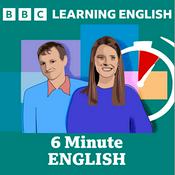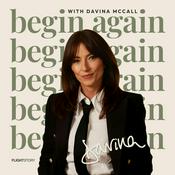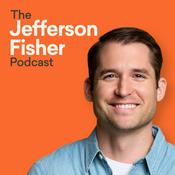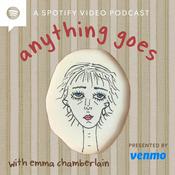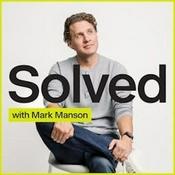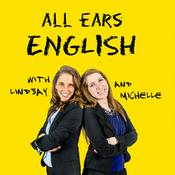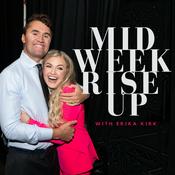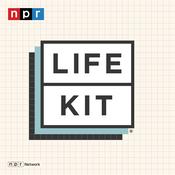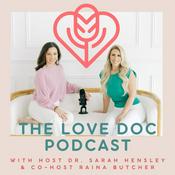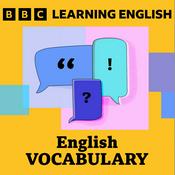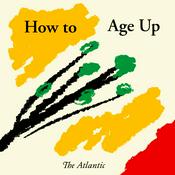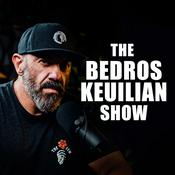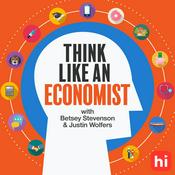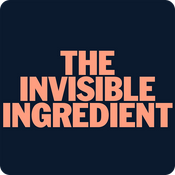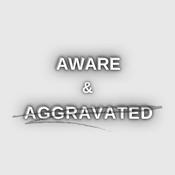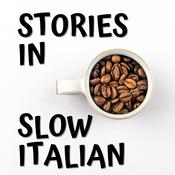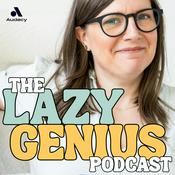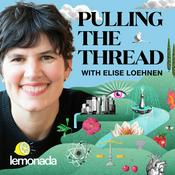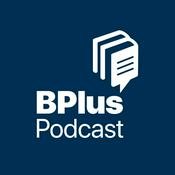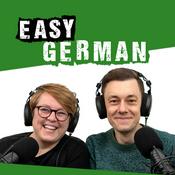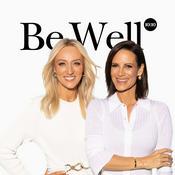Available Episodes
5 of 29
- Inside the Merino Wether Trials: Benchmarking Bloodlines with Dr. Sue Hatcher and Phil GrahamJoin us for another thought-provoking episode of Genetics in the Paddock with Emily, as we dive into one of the longest-running and most influential sources of independent Merino genetics information: wether trials.In this episode, Emily is joined by Phil Graham from Graham Advisory and Dr Sue Hatcher from Makin Outcomes to unpack why this decades-old approach is re-emerging as a powerful decision-making tool for today’s sheep producers. Together, they explore the origins of the combined wether-trial analyses stretching back to the 1990s, why producers have consistently driven demand for independent data, and how these trials continue to provide deep genetic insights beyond what you can see from on-farm performance alone.From benchmarking bloodlines and understanding genetic variation in key traits like fibre diameter and clean fleece weight, through to navigating the well-known trade-offs between production traits, Phil and Sue break down what the results really mean for flock improvement. We also step through how a wether trial actually works, from entry to final data collection, and discuss why the analysis is done on a ewe-flock basis, how producers should interpret results given changing breeding objectives, and the influence of environment on data interpretation.Finally, we look ahead to the future of wether trials and where the next 10–15 years of industry-led benchmarking could take us. Whether you’re a producer, advisor, or simply keen to understand how independent genetic comparisons can guide better breeding decisions, this episode is a must-listen.This podcast was produced in collaboration with South East Local Land Services, and further resources, links, and trial information are available on their webpage.https://www.nsw.gov.au/regional-and-primary-industries/livestock/sheep/comparison-of-merino-bloodlinesTo provide feedback, comments, suggestions for future topics, or guest speakers you'd like to hear from, please email: [email protected] information is for informative and educational purposes only and does not constitute advice.This episode is produced by the Extensive Livestock Team within the NSW Department of Primary Industries and Regional Development.Additional information: https://www.sheepgenetics.org.au/--------40:17
- The Genetics Behind the Microbiome: Predicting Performance with Microbes with Dr. Andrew Lakamp (Pt.2)Join us for another deep-dive episode of Genetics in the Paddock with Emily, as we continue exploring one of the most exciting frontiers in livestock science: the microbiome. In Part 2, Emily is again joined by livestock geneticist Dr. Andrew (Drew) Lakamp to look beyond what the microbiome is and focus on what it can do for breeding decisions.In this episode, we dig into how an animal’s genetics influence the microbes in their gut and eye, what “microbiome-mediated genetic effects” actually mean, and how genome + metagenome data could improve breeding value predictions.We also unpack practical questions for industry: When should samples be collected? How do sequencing methods differ? And could microbiome data one day be incorporated into EBVs and selection indexes?Whether you’re a producer, advisor, researcher, or simply curious about where the next decade of breeding innovation is heading, this episode offers a glimpse into the future of microbes as measurable, selectable traits.To provide feedback, comments, suggestions for future topics, or guest speakers you'd like to hear from, please email: [email protected] This information is for educational purposes only and does not constitute advice.Produced by the Extensive Livestock Team within NSW Department of Primary Industries and Regional Development.--------26:33
- The Genetics Behind the Microbiome: Why Your Livestock’s Microbes Matter with Dr. Andrew Lakamp (PT. 1)Join us for another thought-provoking episode of Genetics in the Paddock with Emily, as we explore one of the most fascinating and fast-moving frontiers in animal science — the microbiome. In this episode, Emily is joined by Drew Lakamp, a livestock geneticist helping unravel how the billions of microbes living in and on our animals influence productivity, health, and even breeding potential.Together, they unpack what the microbiome actually is, how it differs from the animal’s own genome, and why producers should care. From feed efficiency and disease resistance to fertility and welfare, we look at how microbial communities could one day be treated as traits in their own right. Whether you’re a producer, advisor, or simply curious about the hidden biology shaping animal performance, this episode is a must-listen for understanding the role of microbiomes in modern livestock breeding.To provide feedback, comments, suggestions for future topics, or guest speakers you'd like to hear from, please email: [email protected] information is for informative and educational purposes only and does not constitute advice.This episode is produced by the Extensive Livestock Team within the NSW Department of Primary Industries and Regional Development.--------20:46
- Gene Editing in Livestock: What, Why, and What’s Next? with Dr. Gus McFarlaneJoin us for another thought-provoking episode of "Genetics in the Paddock with Emily", as we unpack the science, promise, and challenges of gene editing in livestock—with a special focus on CRISPR technology. In this episode, Emily is joined by Gus McFarlane, a Research Scientist from NSW Department of Primary Industries and Regional Development, passionate about welfare-driven and climate-adaptive breeding with the help of gene editing technologies. Together, they explore how CRISPR is changing the conversation in cattle and sheep production—from improving thermotolerance and disease resistance to reducing mulesing and adapting European breeds to Australian conditions.We break down how gene editing works (in practical, paddock-relevant terms), how it differs from GMOs, and why it's attracting renewed global attention. Gus shares current and future examples—from slick-coated cattle to gene-edited salmon—and explains why Australia may see commercial gene-edited livestock within the next five years. We also tackle the big questions:🔬 What are the risks of misuse or misunderstanding?💡 Will gene editing replace EBVs and selection indexes—or complement them?⚖️ What regulations and safeguards are in place to ensure welfare and consumer confidence?Whether you're a producer, advisor, or just curious about where livestock genetics is heading, this episode is a must-listen for understanding the realities and possibilities of gene editing in our extensive (and intensive!) systems. To provide feedback, comments, suggestions for future topics, or guest speakers you'd like to hear from, please email: [email protected] information is for informative and educational purposes only and does not constitute advice.This episode is produced by the Extensive Livestock Team within the NSW Department of Primary Industries and Regional Development.--------31:07
- 30 Years of Proof: Why Muscular Cows Mean More Meat, More Profit with Dr Linda Cafe and Brett LittlerJoin us for another insightful episode of "Genetics in the Paddock with Emily" as we welcome Dr. Linda Cafe, a research scientist from NSW Department of Primary Industries and Regional Development, and Brett Littler, Senior Land Services Officer with Local Land Services. In this episode, we dive deep into a remarkable Australian study that ran from 1992 to 2020, exploring muscle scoring in beef cattle and its impacts on herd productivity and profitability.Linda and Brett share fascinating insights from almost three decades of research, demonstrating how selecting cows for higher muscle scores significantly increases meat yield and carcass efficiency—without compromising maternal productivity, fertility, or calving ease. We discuss the genetics behind muscle traits, the role of the myostatin gene, and practical strategies producers can use today to enhance herd resilience, efficiency, and profitability.Whether you're a producer, geneticist, or someone passionate about beef cattle, this episode offers valuable insights that challenge old myths and reveal new opportunities to optimise your herd's performance.To provide feedback, comments, suggestions for future topics, or guest speakers you'd like to hear from, please email: [email protected] information is for informative and educational purposes only and does not constitute advice.This episode is produced by the Extensive Livestock Team within the NSW Department of Primary Industries and Regional Development.Resources:Cafe LM, McKiernan WA, Robinson DL (2014) Selection for increased muscling improved feed efficiency and carcase characteristics of Angus steers. Animal Production Science 54: 1412-1416. https://doi.org/10.1071/AN14316 Cafe LM, McKiernan WA, Robinson DL (2018) Selection for increased muscling is not detrimental to maternal productivity traits in Angus cows. Animal Production Science 58: 185-192. https://doi.org/10.1071/AN13023 Cafe LM, Polkinghorne R and Robinson DL (2021) Increased muscling and one copy of the 821 del11 myostatin mutation did not reduce meat quality in Angus steers. Animal Production in Australia 33. 2021AAAS_Cafe_Linda (animalscienceconference.com.au) Greenwood PL, O’Rourke BA, Brunner J, Johns WH, Arthur PF and Cafe LM (2019) Cellular development in muscle differs between Angus steers from low and high muscle score selection lines. Journal of Animal Science 97: 3199-3212. https://doi.org/10.1093/jas/skz144 McGilchrist P, Pethick DW, Bonny SPF, Greenwood PL, Gardner GE. (2011) Beef cattle selected for increased muscularity have a reduced muscle response to adrenaline and increased adipose tissue response to adrenaline. Animal 5:875-884. https://doi.org/10.1017/S1751731110002508 McKiernan WA, Richardson E, Wilkins JF (2004) Effect of selection for increased muscling on early female reproductive potential. Animal Production in Australia 25:283. https://www.publish.csiro.au/SA/pdf/SA0401128 McKiernan WA (1995) Growth, carcass value and body measurements from high and low muscled bulls. M.Sc. thesis, University of New South Wales, Australia. Growth carcass value and body measurements from high and low muscled cattle (unsw.edu.au) O’Rourke BA, Dennis JA, Healy PJ, McKiernan WA, Greenwood PL, Cafe LM, Perry D, Walker KH, Marsh I, Parnell PF and Arthur PF (2009) Quantitative analysis of performance, carcass and meat quality traits in cattle from two Australian beef herds in which a null myostatin allele is segregating. Animal Production Science 49:297-305. https://doi.org/10.1071/EA08206 Robinson DL, Cafe LM, McKiernan WA (2014) Heritability of muscle score and genetic and phenotypic relationships with weight, fatness and eye muscle area in beef cattle. Animal Production Science 54: 1443-1448. https://doi.org/10.1071/AN14347 Walmsley BJ, McKiernan WA (2011) Observed trends in estimated breeding values in response to selection using visual muscle score in beef cattle. Proceedings of the Association for the Advancement of Animal Breeding and Genetics. 19:123-126. walmsley123.pdf (aaabg.org)--------36:58
More Education podcasts
Trending Education podcasts
About Genetics in the Paddock with Emily
Welcome to "Genetics in the Paddock," the podcast where we dive deep into the fascinating world of livestock genetics and its impact on agriculture. Join us as we explore the latest advancements in livestock genetics, bringing you insights from experts in the field.Whether you're a seasoned producer, a curious consumer, or someone with a passion for science, this podcast is your go-to source for understanding how genetics is revolutionizing the way we breed livestock. From discussing cutting-edge breeding techniques to exploring the genetic traits that make livestock more profitable, sustainable and productive, we cover it all.Hosted by Emily Johnston, a Genetics Development Officer with NSW DPIRD, each episode features engaging conversations with scientists, researchers, and industry leaders who share their expertise and stories behind the innovations that are shaping the future of agriculture. Get ready to unravel the genetic mysteries hidden in the paddock and discover how they contribute to sustainable and efficient farming practices.Tune in to "Genetics in the Paddock" and join the conversation in livestock genetics. Whether you're in the field or simply curious about the science behind livestock genetics, this podcast is your gateway to the insightful conversations around all things genetics.For any feedback, comments, questions or recommendations for topics or guest speakers, please email: [email protected].
Podcast websiteListen to Genetics in the Paddock with Emily, 6 Minute English and many other podcasts from around the world with the radio.net app
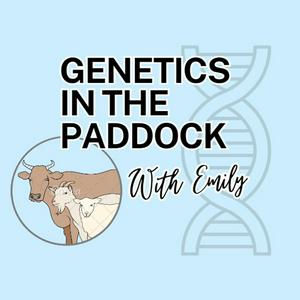
Get the free radio.net app
- Stations and podcasts to bookmark
- Stream via Wi-Fi or Bluetooth
- Supports Carplay & Android Auto
- Many other app features
Get the free radio.net app
- Stations and podcasts to bookmark
- Stream via Wi-Fi or Bluetooth
- Supports Carplay & Android Auto
- Many other app features


Genetics in the Paddock with Emily
Scan code,
download the app,
start listening.
download the app,
start listening.
